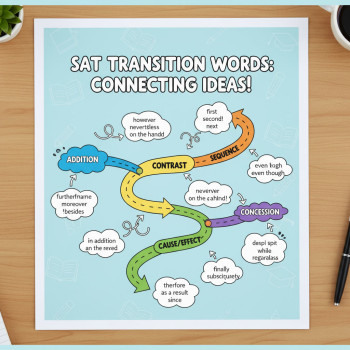Introduction: You Don’t Have to Choose Between the Field and the Future
If your afternoons are a blur of drills, rehearsals, or club meetings, the idea of adding SAT prep to your plate can feel overwhelming. But what if I told you you don’t need to choose between being a committed athlete or club leader and doing well on the Digital SAT? In fact, sports and extracurriculars can be your secret advantages. They build discipline, resilience, time-awareness, and stress-management — all skills that translate directly to better test performance.
This guide walks you through how to combine intelligent, efficient SAT preparation with a full extracurricular life. You’ll get practical schedules, study techniques that fit into short windows of time, nutrition and recovery tips for peak brain performance, and realistic expectations. Along the way I’ll mention how Sparkl’s personalized tutoring — with one-on-one guidance, tailored study plans, expert tutors, and AI-driven insights — can fit naturally into a busy student’s plan when you need focused help.
Why Extracurriculars Are an Asset for SAT Prep
Before we talk logistics, let’s flip the script: sports and clubs aren’t just distractions to manage — they’re assets you can leverage.
- Practice under pressure: Games and performances teach you how to focus when stakes are high, which is useful on test day.
- Routine and habit formation: Regular practices build consistency, which is exactly what effective SAT prep needs.
- Time-awareness: Athletes learn to maximize short practice windows — the same skill you’ll use when you study in 25–45 minute bursts.
- Stress-management: Pre-game mental routines, breathing techniques, and visualization are great tools on test day or before a practice SAT.
Principles for Combining Both Worlds
Use the following principles as your North Star. They’ll make your plan feel less like a juggling act and more like a smart, integrated lifestyle.
- Quality over quantity: Focused, deliberate study beats marathon sessions that tire you out before practice.
- Consistency beats cramming: Small daily wins add up more reliably than one long weekend session.
- Recovery is studying too: Sleep, proper nutrition, and mental rest improve memory consolidation and reaction time.
- Use transferable skills: Translate teamwork, discipline, and routine from sport into study habits.
Designing a Weekly Plan: Sample Schedules for Different Loads
Below are three realistic weekly templates depending on how much extracurricular time you commit. These are flexible frameworks — swap the blocks around to suit your commute or practice times.
Schedule Key
- “Focused Study” = 45–60 minutes of deliberate practice (timed sections, problem sets, targeted weaknesses)
- “Quick Review” = 20–30 minutes (flashcards, vocabulary, mental math)
- “Mock/Test” = full-length or timed practice section using digital platform (simulate test conditions)
- “Recovery” = sleep, active recovery, stretching, or mindfulness
High-Commitment Athlete (10–20 hours/week extracurriculars)
- Mon: Morning quick review (20 min), Evening practice — light review after practice (20 min)
- Tue: Focused study (45 min) mid-afternoon, Team practice
- Wed: Morning quick review (20 min), Active recovery night
- Thu: Focused study (60 min) before practice (skills-focused)
- Fri: Light review, short relaxation routine to prep for weekend
- Sat: Practice test (Bluebook-style) or two longer timed sections — then recovery
- Sun: Review mistakes from Saturday (60 min), plan next week
Moderate Extracurriculars (5–10 hours/week)
- Mon: Focused study (60 min)
- Tue: Quick review (30 min)
- Wed: Focused study (45 min)
- Thu: Club or rehearsal + quick practice session (30 min)
- Fri: Rest or light review
- Sat: One full practice test section + review
- Sun: Strategy session (60 min) and active recovery
Light Extracurriculars / Busy Academic Load
- Daily: Two short sessions (25 min each) — one for math, one for reading/writing
- Twice weekly: Longer focused study (90 min)
- Weekend: Mixed practice and one simulated section
How to Use Small Pockets of Time Effectively
One of the biggest advantages student-athletes have is learning to make micro-windows of time highly productive. Here are smart, specific uses for 10–30 minute stretches.
- Pre-practice warm-up: 10 minutes of vocabulary flashcards or formula review while you stretch or tape ankles.
- Between drills: Two or three timed SAT questions to maintain mental quickness.
- On the bus: Listen to an audio reading passage or verbal reasoning tips; mental practice matters.
- During cooldown: Reflect on one mistake from a practice test and jot a correction — tiny habit, big gains.
Study Methods That Fit an Active Life
You don’t need huge blocks of time to see progress. Choose strategies that provide high return on short investment.
- Deliberate practice: Pick a narrow skill (e.g., data interpretation or punctuation), practice targeted problems, review solutions critically.
- Spaced repetition: Use flashcards (digital or paper) for vocabulary and grammar rules — review them over days and weeks.
- Simulate the environment: Take at least a few practice sessions on a device like the test day environment to reduce setup anxiety.
- Score drift analysis: Track the types of errors you make over time and focus on patterns not just scores.
Nutrition, Sleep, and Recovery: The Performance Triangle
Physical performance and cognitive performance are deeply linked. If you’re training hard, your brain needs fuel and rest to learn effectively.
- Sleep: Aim for 8–9 hours on heavy training nights; sleep consolidates memory and improves reaction time.
- Pre-study nutrition: A balanced snack with protein and complex carbs (e.g., yogurt and fruit, peanut butter toast) supports concentration.
- Hydration: Even mild dehydration impairs cognitive function — keep a water bottle handy during study sessions.
- Active recovery: Short walks, stretching, or breathing routines can reset focus between study blocks.
Smart Practice: What to Do When You’re Short on Time
When you’re exhausted after practice, don’t force a heavy study session. Use lower-energy, higher-impact activities instead.
- Review annotated notes on mistakes from past practice tests.
- Do 10–15 minutes of reading comprehension by skimming passages and summarizing main ideas aloud.
- Use mobile apps or flashcards for steady improvement without heavy cognitive load.
Weekly Progress Table: How Small Habits Add Up
| Activity | Daily Time | Weekly Total | Impact |
|---|---|---|---|
| Quick review (vocab, formulas) | 20 min | ~2.5 hours | Improves recall, reduces minor errors |
| Focused practice (timed sections) | 45–60 min (3 sessions) | ~4–6 hours | Builds stamina and strategy |
| Practice test or simulation | 3–4 hours (once/week or biweekly) | 3–4 hours | Realistic pacing, score calibration |
| Recovery and sleep prioritization | ~8 hrs/night | 56+ hours | Memory consolidation and peak performance |
How to Run Productive Practice Tests Around a Sports Calendar
Practice tests are essential, but timing them poorly can leave you too exhausted to benefit. Here’s how to schedule them strategically:
- Place full practice tests on light-training days or days off.
- If a big game is tomorrow, avoid a full-length test the day before; instead do a short, focused review and sleep early.
- After a match or performance, wait at least one day before a heavy practice test — your body needs recovery to think clearly.
Mindset: From Competition to Collaboration
Viewing SAT prep as another game helps — but shift from a win/lose mindset to one of iterative improvement. Track progress in small metrics: fewer wrong answers in a specific question type, faster pacing across passages, fewer careless errors. Celebrate these wins like a successful play or a well-run rehearsal.
When to Bring in Extra Help: Tutors, Coaches, and Personalized Plans
There are times when general strategies aren’t enough. If you’ve plateaued in a section or need to maximize a marginal score increase for scholarship or admission goals, targeted support can make a big difference. Sparkl’s personalized tutoring is designed for busy students — offering one-on-one guidance, tailored study plans, expert tutors who can meet you when you’re free, and AI-driven insights that highlight where a few hours of focused practice will yield the biggest score gains. That kind of precision is especially helpful if you’re balancing heavy extracurricular demands.
Study Tools That Fit a Busy Life
Some tools are better suited for a mobile, time-sliced schedule.
- Digital practice tests that mirror the real Digital SAT environment — get comfortable with the format.
- Spaced-repetition apps for vocabulary and grammar.
- Audio readings and podcasts for on-the-go reading comprehension practice.
- Short video lessons that explain one concept clearly and quickly after practice.
Sample 8-Week Ramp-Up Plan Before a Test Date
This plan assumes a student with regular extracurricular commitments who can average 6–8 hours/week of SAT prep. Modify pacing if you have more or less time.
- Weeks 1–2: Diagnostic test + identify three highest-impact weaknesses. Start spaced repetition for vocab. Two focused sessions/week.
- Weeks 3–4: Targeted practice on weak areas. One short simulated section every week. Emphasize sleep on practice nights.
- Weeks 5–6: Increase to one full practice-section simulation per week and one timed math section. Review errors in depth.
- Weeks 7–8: Lighten the study load 3–4 days before the test, focusing on review and recovery. Avoid cramming the day before; do light review and rest.
Practical Examples: Real-World Routines That Work
Here are two real-world student routines to illustrate how these principles look in practice.
Case Study: High School Soccer Captain
Alex practices 2 hours a day and trains games on weekends. He does a 20-minute vocabulary and formula review during pre-practice warm-up. On Tuesdays and Thursdays he studies one focused 45-minute math block before practice, using kill-mode practice (timed, no distractions). Saturday mornings are reserved for a single timed reading section after a light team stretch. Alex uses recovery routines (ice baths, good sleep) and meets a Sparkl tutor biweekly to drill weak question types — this targeted help keeps his sessions efficient and aligned with his goals.
Case Study: Theater Student with Weekend Performances
Priya has rehearsals most evenings. She studies in the afternoons, using 25-minute Pomodoro sprints: one sprint for reading and one for writing or grammar. On travel days, she listens to audio passages to fine-tune comprehension. Two Sundays before the test she takes a full practice test when she has a day off. Priya added a few sessions with a tutor to refine essay strategies and pacing so she could keep rehearsals uninterrupted.
Dealing with Burnout: Recognize, Reset, and Recover
Burnout is a real risk when you’re simultaneously striving in athletics and academics. Watch for signs like persistent fatigue, irritability, declining performance, or loss of interest in activities you used to enjoy. When you see those signs:
- Pull back study intensity for a few days and prioritize sleep.
- Talk to a coach, teacher, or tutor to shift deadlines or adjust workloads.
- Replace a study block with active recovery: a walk, stretching, or time with friends.
Test-Day Strategies for Athletes and Performers
Bring your pre-game routines into test day: a short warm-up, breathing exercises, and a simple focus ritual. Practical tips include:
- Do a 10-minute light warm-up: breathing, positive visualization, and scanning a few flashcards to prime the brain.
- Eat a balanced breakfast with carbs and protein about 90 minutes before the test.
- Bring a small checklist: device ready (Bluebook), admission ticket, ID, snacks for after the test.
- Take breaks mentally between sections — shake your hands, breathe, and reset.
Measuring Progress Without Getting Obsessed
Track trends, not day-to-day fluctuations. Use a simple spreadsheet or app to log:
- Practice-test scores and section breakdowns
- Frequency and duration of study sessions
- Mistake types and how often they repeat
Adjust your plan monthly based on patterns rather than single bad days.
Final Checklist: The Week Before the Test
- Finish the week with light review and plenty of sleep.
- Confirm device and Bluebook readiness — practice on a similar device ahead of time.
- Pack a test-day kit (ID, admission info, water, small snack for after the test).
- Review one-page strategy notes: time management reminders, common traps, formula sheet.
- If you need last-minute expert input, schedule a targeted Sparkl session to fine-tune pacing or iron out a stubborn weakness.
Parting Thought: Build a Sustainable Rhythm, Not a Sprint
Balancing SAT prep with sports and extracurriculars is less about sacrifice and more about smart integration. You already have many of the skills you need: discipline, routine, resilience, and a team-oriented mindset. Translate those strengths into short, focused study bursts, protect recovery time, and seek targeted support when you need it. If you’re juggling a heavy schedule, a few one-on-one tutoring sessions or a tailored study plan from a service like Sparkl can provide efficiency and clarity so your effort turns into measurable progress.
At the end of the day, colleges look for engaged, well-rounded students. Your ability to perform on the field or stage while preparing for the SAT tells a powerful story — and with a thoughtful plan, you’ll be ready to tell it with confidence.
Resources to Start With
Begin with a diagnostic test to know where you stand, then build a weekly plan that respects your practice schedule. Use short, targeted practice blocks, track errors, prioritize recovery, and get targeted help when needed. Combine those elements and you’ll find the rhythm that keeps both your game and your future moving forward.
Closing Note
This road is a long one with many small, meaningful steps. You don’t have to be perfect every day — you only need to be consistent, curious, and kind to yourself. Keep your goals in view, honor your commitments to both your team and your future, and remember: preparation that respects your whole life is preparation that lasts.
















No Comments
Leave a comment Cancel